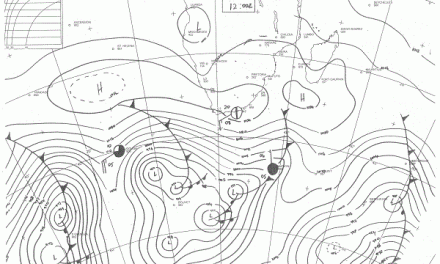
Local weather still in the grip of the mighty Pacific Ocean
As Namibia celebrates its Independence Day, so does its dependence on the vagaries of weather become manifest. The Pacific Ocean, although far removed, literally on the opposite side of the globe, holds to key to the local weather. Any analysis of current conditions, including the prevailing drought, without reference to sea surface temperatures and prevailing winds of the Pacific Ocean, is meaningless.
But what makes this ocean so important?
Our climate zone is defined as “Arid”. Dry areas typically display a large range of temperatures and precipitation. This fact can be observed empirically. Namibia is dry and often extremely cold in winter and less dry but very hot in summer.
Variability is the norm regardless of any time-scale. Arid climates are from the ecological and environmental perspective considered to be marginal, notably distanced from the more equable climate zones to both north and south. This marginal context ensures that both ecology and environment are denizens to hardy species capable of survival through worst and best of the ranges. Couple this base with the unique and favourable features of our geography and an upward base is found. The environment is more provident than it appears on the surface but still variability persists with no respite.
As we have come to record these ranges of variability, so have we also come to identify the weather forces pressuring the overall climate. This variability forces scientists to pay more attention to definitions to make provision for a description of weather that covers all the observed extremes.
These definitions must cover all weather patterns and associated synoptics.
We can then start trying to foresee developments leading to such extremes, let alone the in-between, ordinary, occasions of weather.
The definitions for known conditions enable us to identify variations from the norm. This has also helped researchers over the past decade, to identify departures from the norm, realising that weather has changed everywhere in the world. As weather patterns showed a departure form the norm, we had to adjust our definitions to the extent that we started calling it Climate Change.
Place this variable scenario into Namibia’s airspace and we have seen some spectacularly wet years, alternated by very dry years. Annual rainfall since the turn of the century had departed significantly from historical norms.
The marginal context will not go away, the changing climate has seen during this new millenium, an ability to tap the moist, tropical, unstable air, adjacent northward, into our airspace with increased rains on a frequent basis. What we have previously identified as our key rainfall months have also shifted.
The anchor element of our climate remains the equatorial Pacific Ocean. Events emanating from this ocean resonate around the hemisphere. Regardless of what local conditions are, the equatorial Pacific fundamentally determines all weather. Locally we have observed this from the significant divergence in rainfall witnessed in 2011, 2012, and now in 2013.
During 2012, La Nina’s decline was now evident, a wobble between ranges of neutral could not be ignored: then stability returned. The wobble seemed to have faded: no footprints nor shadows. However, more distant features showed otherwise. By January an extensive high pressure core in the middle atmosphere, between some 16000 and 28000 feet aloft, had formed between 25oS and 35oS from the southern African skies westward. This is reminiscent of a winter pattern, but it is also reminiscent of a Pacific Ocean event as observed previously in our climate patterns.
It appears the faded resonance from the wobbly Pacific found a base elsewhere around the world, opposing ability to advect moist air into our skies.
Because this measure of climate change is previously unknown, we have little from which to base situation assessments, but it seems distant oceanic synopses and their effects can prevail in spite of the identified expansion of the favourable airmass to our north.











































